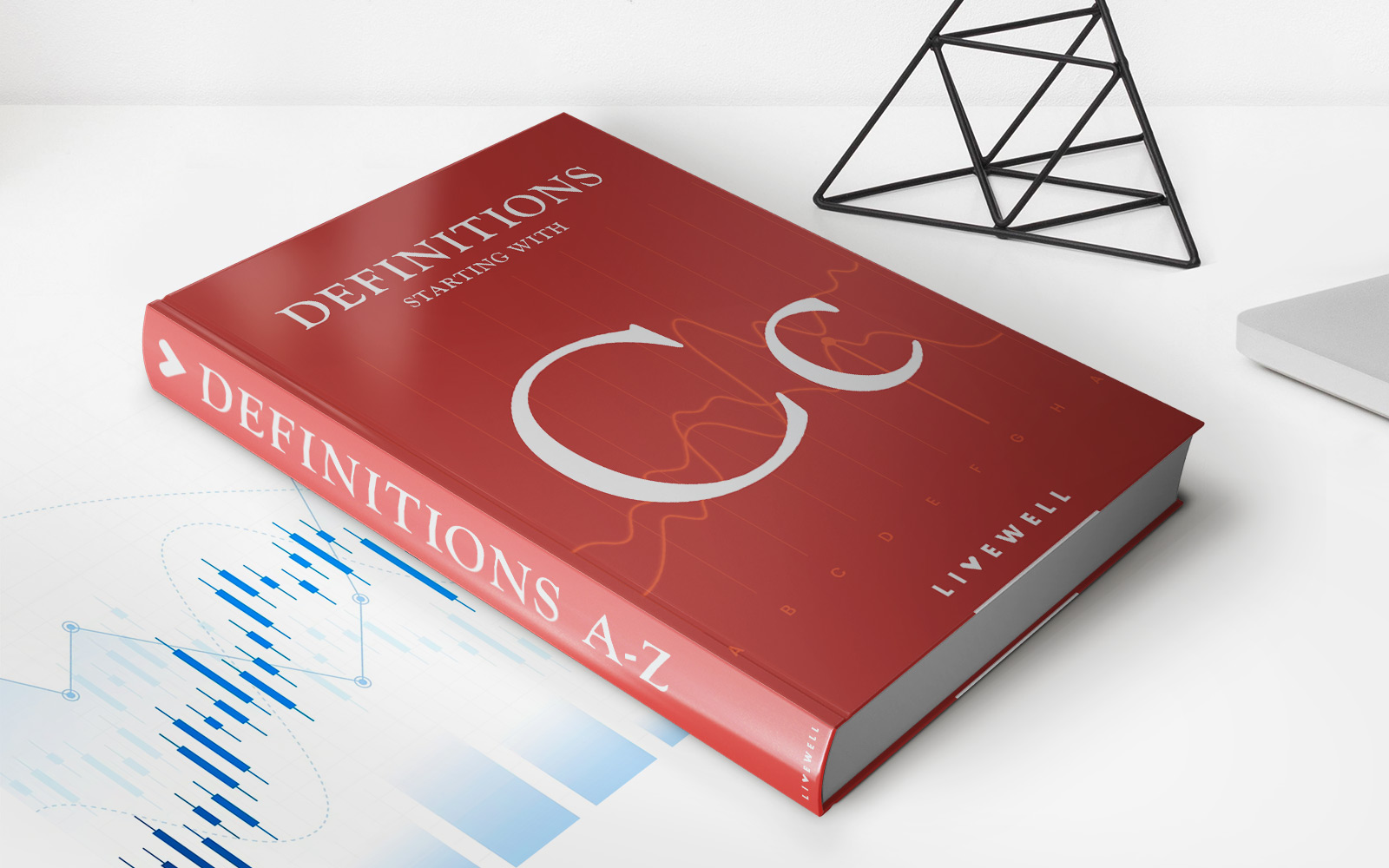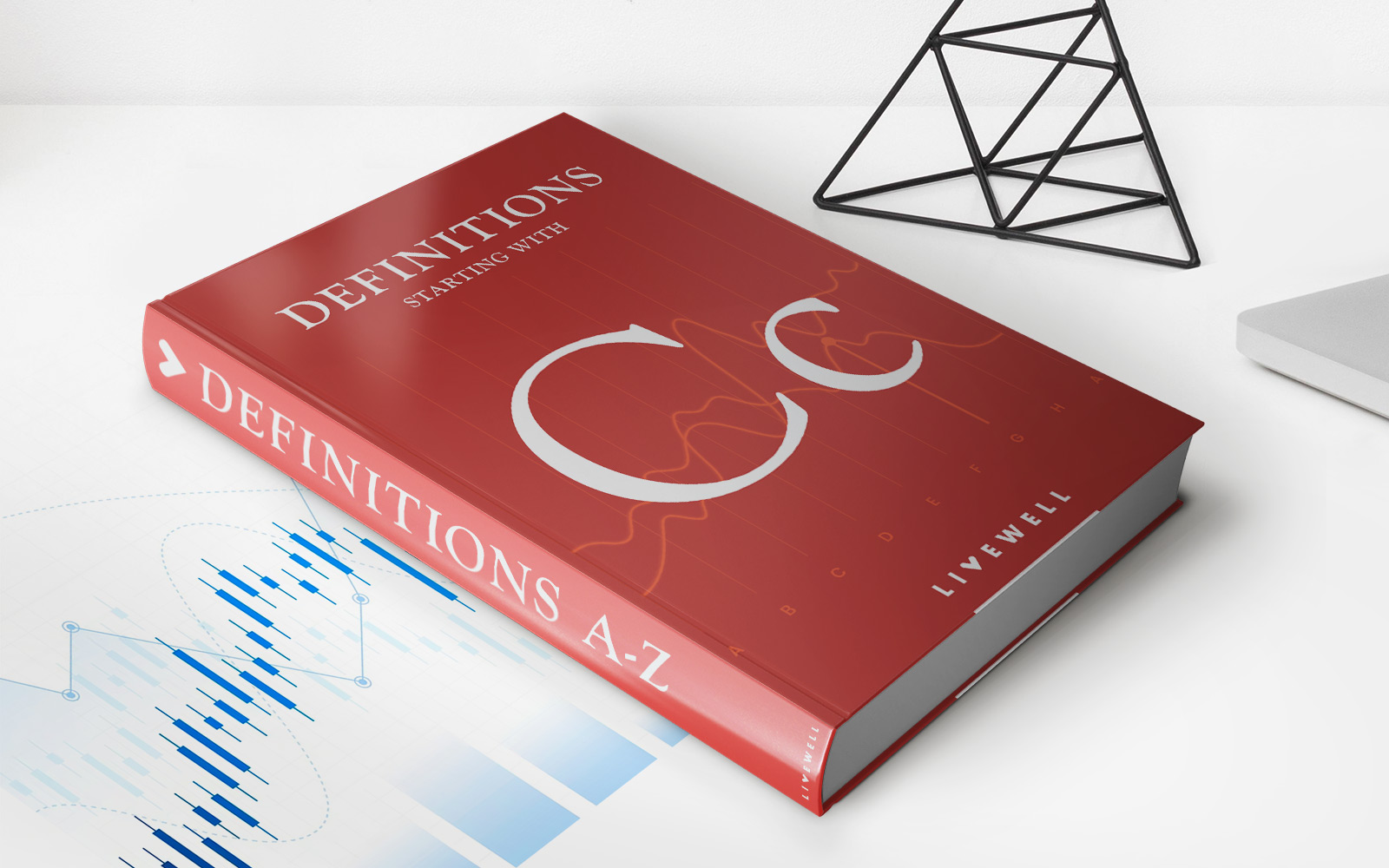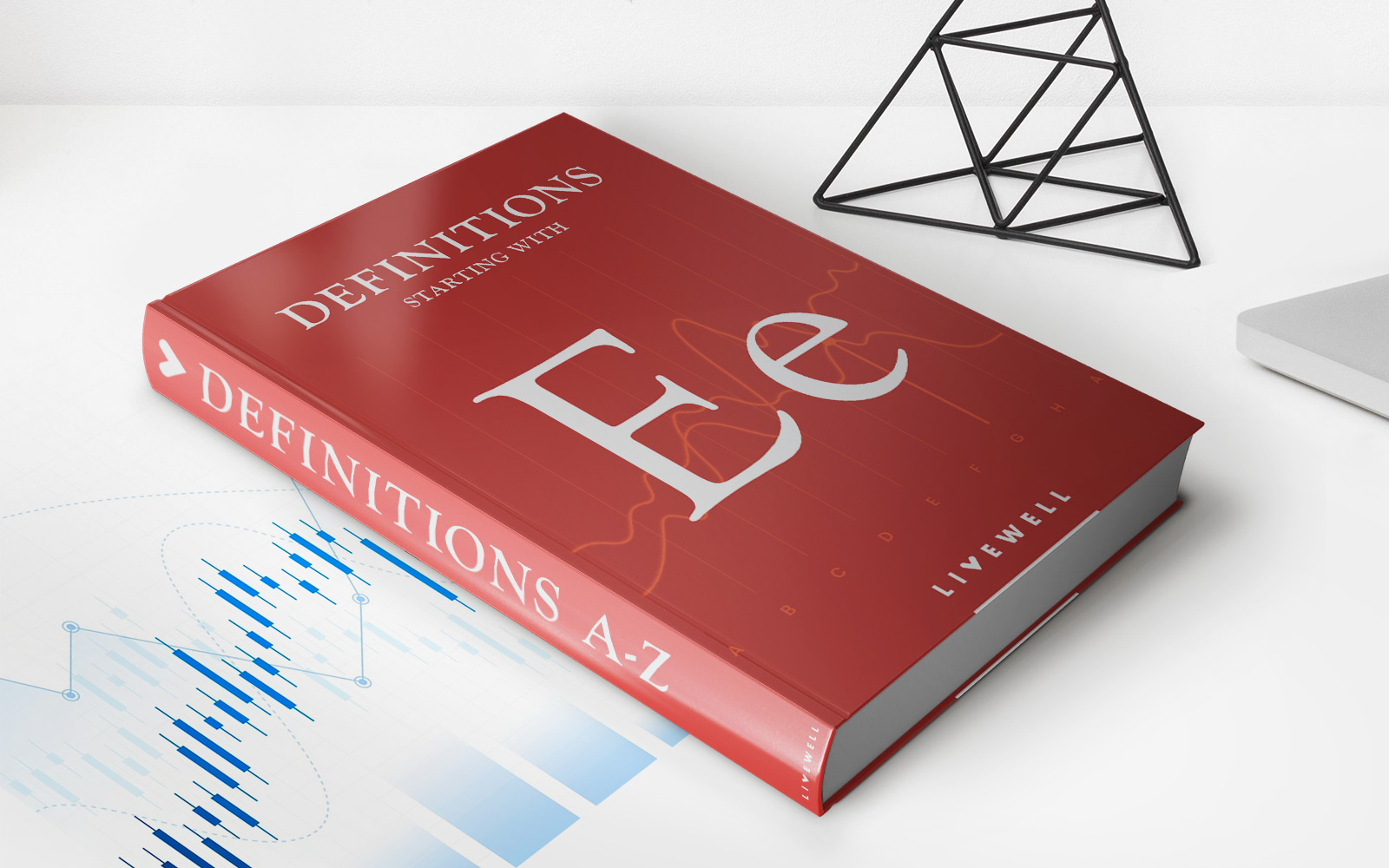

Finance
What Are General Damages In Insurance?
Published: November 20, 2023
Learn about general damages in insurance and how they can impact your finances. Gain a deeper understanding of this important aspect of insurance coverage.
(Many of the links in this article redirect to a specific reviewed product. Your purchase of these products through affiliate links helps to generate commission for LiveWell, at no extra cost. Learn more)
Table of Contents
Introduction
Welcome to the world of insurance, where terms like premiums, deductibles, and coverage limits dominate the conversation. One important concept that often arises in insurance claims is general damages. When it comes to insurance, understanding what general damages are and how they are calculated is crucial.
General damages refer to the monetary compensation awarded to an individual for non-economic losses suffered as a result of an accident, injury, or other covered events. Unlike specific damages, which are tangible and quantifiable losses, general damages are more subjective in nature, as they involve the assessment of intangible aspects such as pain and suffering, emotional distress, and loss of enjoyment of life.
Insurance policies typically cover both economic and non-economic losses. Economic losses are generally straightforward to quantify as they involve tangible financial costs such as medical expenses, property damage, and loss of income. On the other hand, non-economic losses are often more complex to evaluate as they pertain to intangible, non-monetary damages.
In this article, we will delve deeper into the concept of general damages in insurance, exploring the types of general damages, their calculation and evaluation, as well as the factors that influence the awards. Understanding general damages is not only important for insurance companies but also for policyholders seeking fair compensation for their losses.
Definition of General Damages
General damages, also known as non-economic damages, are a type of compensation awarded to an individual to compensate for intangible losses suffered as a result of an accident, injury, or other covered events. These damages aim to provide monetary relief for the pain and suffering, emotional distress, and diminished quality of life experienced by the individual.
Unlike economic damages, which are tangible and quantifiable, general damages are not easily measurable as they involve subjective factors that vary from person to person. The extent of general damages is determined based on the severity and impact of the injury or loss on the individual’s physical and emotional well-being.
General damages can cover a wide range of losses, including:
- Pain and suffering: Compensation for physical and emotional pain endured as a result of the injury or accident.
- Emotional distress: Reimbursement for the mental anguish, anxiety, or psychological trauma experienced due to the incident.
- Loss of enjoyment of life: Compensation for the inability to engage in activities and pursuits that previously brought joy and fulfillment.
- Loss of consortium: Damages awarded to a spouse or family member for the loss of companionship, affection, and support resulting from the injury.
It’s important to note that the availability and calculation of general damages may vary depending on the jurisdiction and the specific terms of the insurance policy. Some jurisdictions may impose limits or caps on the amount of compensation that can be awarded for general damages.
Insurance companies and adjusters play a crucial role in assessing general damages and determining the appropriate compensation to be awarded. They take into account various factors, such as the severity of the injury, the impact on the individual’s daily life, and the duration of the physical and emotional suffering, to calculate a fair and reasonable amount for general damages.
Types of General Damages
General damages encompass a variety of intangible losses experienced by an individual. These damages can be broadly categorized into two main types: economic general damages and non-economic general damages.
Economic General Damages
Economic general damages involve compensation for quantifiable financial losses directly related to the injury or incident. While general damages are typically considered non-economic, economic general damages are an exception to this rule. These damages are still intangible in nature but have a measurable economic impact.
Examples of economic general damages include:
- Medical expenses: Reimbursement for the cost of medical treatment, hospitalization, medications, and rehabilitation services resulting from the injury or incident.
- Loss of earning capacity: Compensation for the reduction in the ability to earn income in the future due to the injury.
It’s important to note that economic general damages are often subject to stricter evaluation and documentation requirements compared to non-economic general damages. Insurance companies may require extensive documentation and evidence to support the claimed economic losses.
Non-Economic General Damages
Non-economic general damages are the more commonly recognized type of general damages and cover intangible losses that are not easily quantifiable in monetary terms. These damages aim to compensate the individual for the subjective experiences and impacts of the injury or incident.
Examples of non-economic general damages include:
- Pain and suffering: Compensation for the physical and emotional pain endured as a result of the injury.
- Emotional distress: Reimbursement for the psychological trauma, anxiety, or mental anguish experienced due to the incident.
- Loss of enjoyment of life: Compensation for the inability to engage in activities and hobbies that were previously enjoyed.
- Loss of consortium: Damages awarded to a spouse or family member for the loss of companionship, support, and affection resulting from the injury.
Calculating non-economic general damages can be challenging, as there are no fixed guidelines or formulas to determine their monetary value. Insurance companies and adjusters employ various methods, such as the multiplier method or per diem method, to assess and calculate these damages.
Understanding the types of general damages is crucial for individuals seeking fair compensation for their losses in an insurance claim. By considering both economic and non-economic general damages, insurance companies can provide a comprehensive evaluation of the impact of the injury or incident on the individual’s life.
Economic General Damages
Economic general damages are a specific type of general damages that involve compensating for quantifiable financial losses directly related to an injury or incident. While general damages are generally considered non-economic, economic general damages are an exception as they have a measurable economic impact.
There are two main categories of economic general damages:
Medical Expenses
Medical expenses refer to the costs associated with the necessary medical treatment resulting from the injury or incident. This includes expenses such as hospital bills, doctor consultations, surgeries, medications, physical therapy, rehabilitation, and any other medical services required for the recovery process. These expenses can quickly add up, especially in cases of severe injuries or long-term medical treatments.
Insurance policies often have provisions for medical expense coverage, but the extent of coverage may vary. It’s essential to review your insurance policy to determine the specific limits and conditions for reimbursement of medical expenses.
Loss of Earning Capacity
Loss of earning capacity refers to the reduction in an individual’s ability to earn income in the future as a result of the injury. This can occur when the injury causes long-term disability, limits job opportunities, or affects the individual’s ability to perform certain tasks required for their occupation.
Calculating the loss of earning capacity involves considering various factors, including the individual’s pre-injury income, the potential for career growth, the impact of the injury on their ability to work, and the projected future earning potential. Expert opinions, vocational assessments, and economic analysis may be necessary to determine an accurate estimate of the economic impact.
It’s important to document and provide evidence of the medical expenses incurred and the impact on earning capacity in order to claim economic general damages. This may involve gathering medical bills, receipts, employment records, expert opinions, and other supporting documents.
Insurance policies may have limitations or exclusions when it comes to economic general damages. Reviewing your policy and understanding its terms is crucial to ensure you receive fair compensation for your quantifiable financial losses.
Overall, economic general damages provide financial relief for tangible costs associated with an injury or incident. By compensating for medical expenses and the loss of earning capacity, individuals can receive financial support to cover their immediate and long-term financial needs arising from the injury.
Non-economic General Damages
Non-economic general damages are a significant component of general damages in insurance claims. Unlike economic general damages, which involve quantifiable financial losses, non-economic general damages compensate individuals for intangible losses that are not easily measurable in monetary terms. These damages aim to provide compensation for the emotional and physical toll of an injury or incident.
There are several types of non-economic general damages:
Pain and Suffering
Pain and suffering refers to the physical and emotional distress experienced by an individual as a result of the injury or incident. This can include both immediate pain and ongoing discomfort caused by the injury and any resulting medical treatments. Compensation for pain and suffering aims to acknowledge and alleviate the physical and emotional burden endured by the individual.
Emotional Distress
Emotional distress refers to the psychological trauma, anxiety, or mental anguish an individual may experience due to the injury or incident. This can include feelings of fear, depression, anxiety, sleep disturbances, and other psychological symptoms. Compensation for emotional distress aims to provide support and recognition for the emotional toll the individual has endured.
Loss of Enjoyment of Life
The loss of enjoyment of life refers to the impact the injury or incident has on an individual’s ability to engage in activities and hobbies they once enjoyed. This can include limitations on social interactions, recreational activities, and other personal pursuits that bring fulfillment and joy. Compensation for loss of enjoyment of life acknowledges the decreased quality of life experienced by the individual due to the injury or incident.
Loss of Consortium
Loss of consortium refers to the damage suffered by a spouse or family member due to the injury or incident. It includes the loss of companionship, affection, support, and services that would have been provided by the injured individual. Compensation for loss of consortium recognizes the impact that the injury has had on the interpersonal relationships within the family unit.
The calculation of non-economic general damages can be challenging as they involve subjective factors. Insurance companies and adjusters may consider various factors, such as the severity and duration of the pain and suffering, the impact on daily life and relationships, and the professional opinions of medical experts, to determine the appropriate compensation.
It’s important to provide documentation and evidence supporting the extent of non-economic general damages. This can include medical records, expert opinions, therapy or counseling reports, and personal testimonies that demonstrate the emotional and physical toll of the injury or incident.
Non-economic general damages play a vital role in providing compensation for the intangible losses experienced by individuals. By recognizing and compensating for pain and suffering, emotional distress, loss of enjoyment of life, and loss of consortium, insurance companies strive to provide fair restitution for the holistic impact of the injury or incident.
Calculation and Evaluation of General Damages
The calculation and evaluation of general damages in insurance claims involve assessing the extent of the intangible losses suffered by the individual. While there are no definitive formulas to determine the exact value of general damages, insurance companies and adjusters employ various methods and considerations to arrive at a fair and reasonable compensation amount.
Here are some factors commonly taken into account during the calculation and evaluation process:
Severity of the Injury
The severity of the injury or incident plays a significant role in determining the value of general damages. More severe injuries that result in chronic pain, long-term disability, or substantial physical and emotional limitations generally attract higher compensation amounts. The impact of the injury on the individual’s quality of life and overall well-being is a key consideration in the evaluation process.
Medical Evidence and Documentation
Medical evidence and documentation are crucial in establishing the extent of the injuries and their impact on the individual. This can include medical records, diagnostic reports, expert opinions, and testimony from healthcare providers. Insurance companies rely on this evidence to assess the credibility and validity of the claimed general damages and provide an accurate valuation.
Duration of Suffering
The duration of the individual’s pain, suffering, and other non-economic losses is an essential factor in evaluating general damages. Longer periods of physical and emotional distress are typically given more significant weight in the calculation. This considers not only the immediate impact of the injury but also any ongoing or future impacts that may be anticipated.
Precedent and Case Law
Insurance companies often reference precedent and case law to guide their evaluation of general damages. Previous court decisions and settlements in similar cases provide a benchmark for determining appropriate compensation ranges for specific types of injuries or non-economic losses. These references help maintain consistency and fairness in the evaluation process.
Special Circumstances and Individual Factors
Special circumstances and individual factors related to the injured party can also influence the calculation of general damages. This can include the individual’s age, occupation, prior health conditions, and impact on personal relationships. These factors help personalize the evaluation and ensure that the compensation accounts for the unique circumstances of the injured individual.
It’s important to note that the presence of liability insurance coverage and any limitations or exclusions in the insurance policy may also affect the calculation and evaluation of general damages. Insurance companies are responsible for adhering to the terms and provisions of the policy when determining the appropriate compensation.
Ultimately, the calculation and evaluation of general damages aim to provide fair and reasonable compensation for the intangible losses endured by the individual. Insurance companies and adjusters strive to assess the impact of the injury or incident on the individual’s life and ensure that the value of general damages adequately reflects the physical, emotional, and psychological toll suffered.
Factors Affecting General Damages
When it comes to evaluating general damages in insurance claims, several factors come into play. These factors can significantly influence the compensation awarded for non-economic losses. Understanding these factors is crucial for insurance companies, adjusters, and policyholders seeking fair restitution for the intangible losses suffered.
Severity of the Injury
The severity of the injury or incident directly affects the value of general damages. More severe injuries that result in significant physical and emotional pain, long-term disability, or permanent impairment often command higher compensation. The extent of medical treatment required and the anticipated impact on the individual’s future quality of life play a vital role in determining the severity of the injury.
Impact on Daily Life
The impact of the injury or incident on the individual’s daily life is another critical factor influencing general damages. This includes the limitations in carrying out daily activities, engaging in hobbies, and pursuing personal goals. The degree to which the injury interferes with the individual’s ability to live a normal life is considered when determining the compensation amount.
Pain and Suffering
The level of pain and suffering experienced by the individual is a significant factor in evaluating general damages. This includes both physical pain and emotional distress resulting from the injury. The severity and duration of the pain, as well as the accompanying emotional toll, are carefully assessed to determine a fair compensation amount for the subjective experience of suffering.
Age and Life Expectancy
The age and life expectancy of the individual can also impact general damages. Younger individuals who sustain debilitating injuries may experience a longer duration of suffering, potentially leading to higher compensation. Similarly, the impact of an injury on an individual with a shorter life expectancy may be evaluated differently compared to someone with a longer life expectancy.
Prior Health Conditions
Prior health conditions or pre-existing injuries may affect the evaluation of general damages. It is important to determine to what extent the injury or incident exacerbated the pre-existing condition and caused additional pain, suffering, or limitations. The impact of the injury on the individual’s overall health and well-being needs to be carefully considered when determining the compensation amount.
Contributory Negligence
In cases where the injured individual may have contributed to the incident or injury, contributory negligence is a factor that affects general damages. The compensation amount could be adjusted to reflect the degree of shared responsibility for the injury or incident. The determination of contributory negligence varies depending on the jurisdiction and the specific circumstances of the case.
It’s essential to remember that general damages are subject to legal principles, jurisdictional guidelines, and the specific terms of the insurance policy. Insurance companies and adjusters take these factors into account when assessing the value of general damages to ensure a fair and equitable compensation amount.
Importance of General Damages in Insurance
General damages play a significant role in insurance claims as they address the intangible losses suffered by individuals. While economic damages cover tangible financial losses, general damages compensate for pain and suffering, emotional distress, and the overall impact on an individual’s quality of life. Understanding the importance of general damages is crucial for both insurance companies and policyholders.
Fair Compensation for Non-economic Losses
General damages ensure that individuals are adequately compensated for the non-economic losses they have endured. This includes physical pain, emotional trauma, and diminished enjoyment of life resulting from an injury or incident. By recognizing and compensating for these intangible losses, general damages aim to restore fairness and provide a sense of justice for the injured party.
Holistic Evaluation of Injuries
General damages enable a comprehensive evaluation of the impact of injuries on an individual’s life. While economic damages focus on quantifiable financial losses, general damages consider the subjective aspects of the injury, such as pain and suffering, emotional distress, and loss of consortium. This holistic evaluation ensures that all aspects of an individual’s well-being are taken into account when determining the compensation amount.
Promotion of Settlements and Agreements
General damages encourage the resolution of insurance claims through negotiation, settlements, or alternative dispute resolution methods. By recognizing the intangible losses and providing appropriate compensation, general damages can facilitate a fair resolution that satisfies both the injured party and the insurance company. This promotes timely settlement and avoids protracted legal proceedings.
Enhancing Policyholder Satisfaction and Retention
Fair and transparent compensation for non-economic losses through general damages contributes to policyholder satisfaction and retention. When policyholders feel that their intangible losses have been acknowledged and compensated appropriately, it fosters trust and builds positive relationships between the insurance company and its clients. This, in turn, enhances customer loyalty and satisfaction, leading to long-term business partnerships.
Adhering to Legal and Ethical Obligations
Insurance companies have a legal and ethical obligation to provide fair compensation to policyholders. General damages help fulfill this obligation by ensuring that individuals receive adequate restitution for the full impact of their injuries. By accurately assessing and awarding general damages, insurance companies demonstrate their commitment to meeting their legal and ethical responsibilities.
Overall, general damages hold significant importance in insurance claims by providing fair compensation for non-economic losses. They ensure a holistic evaluation of injuries, promote settlements, enhance policyholder satisfaction, and fulfill legal and ethical obligations. Understanding the importance of general damages is vital in achieving a fair and just outcome for all parties involved.
Conclusion
Understanding general damages is essential in the realm of insurance, as they provide compensation for the intangible losses suffered by individuals. While economic damages cover quantifiable financial losses, general damages encompass the pain and suffering, emotional distress, and diminished quality of life resulting from an injury or incident. By acknowledging and compensating for these non-economic losses, insurance companies can ensure fair restitution for the injured party.
General damages are categorized into economic and non-economic damages. Economic general damages involve measurable financial losses such as medical expenses and loss of earning capacity. Non-economic general damages encompass pain and suffering, emotional distress, loss of enjoyment of life, and loss of consortium.
The calculation and evaluation of general damages consider various factors, including the severity of the injury, impact on daily life, pain and suffering, age, prior health conditions, and contributory negligence. Insurance companies and adjusters rely on medical evidence, documentation, and precedents to determine the appropriate compensation amount.
General damages play a vital role in providing fair compensation and a holistic evaluation of injuries. They promote settlements, enhance policyholder satisfaction and retention, and enable insurance companies to fulfill their legal and ethical obligations. By recognizing the intangible losses suffered by individuals, general damages contribute to a fair and just resolution of insurance claims.
In conclusion, general damages play a crucial role in ensuring that individuals receive appropriate compensation for the intangible losses they have endured. By addressing pain and suffering, emotional distress, and the impact on an individual’s quality of life, general damages provide a comprehensive evaluation of injuries and promote fairness in insurance claims. Understanding general damages is key for insurance companies and policyholders alike, to navigate the complexities of coverage and achieve a satisfactory outcome in the claims process.














